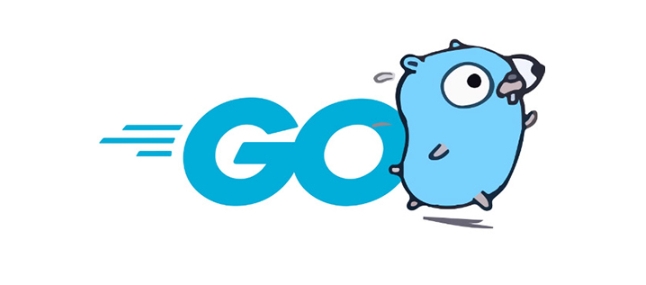Use the net/http package to easily create an HTTP server, register routes through http.HandleFunc and start services with http.ListenAndServe; 2. Customize ServeMux to better manage routes; 3. Middleware can implement logging, authentication and other functions through wrapper processors, supporting combination and reuse; 4. When making requests with http.Client, set timeout, reuse client instances and close response bodies; 5. When handling JSON, set the correct Content-Type, use json.Encoder to send, receive json.Decoder, and handle errors properly; 6. To achieve elegant closure, combine context and Server.Shutdown to ensure that the request being processed is completed; 7. Best practices include avoiding global state and using context Pass request data, limit request body size, verify input and always check errors. Mastering net/http is the basis for building Go Web services, and even using frameworks, it depends on its underlying capabilities.

The net/http package is one of the most powerful and widely used packages in Go's standard library. It provides HTTP client and server implementations that are simple to use yet flexible enough for production applications. Whether you're building a REST API or making external HTTP requests, understanding net/http is essential.

Here's a practical guide to the core features and best practices when working with net/http .
1. Creating an HTTP Server
The simplest way to start an HTTP server in Go is using http.ListenAndServe with http.HandleFunc .

package main
import (
"fmt"
"net/http"
)
func helloHandler(w http.ResponseWriter, r *http.Request) {
fmt.Fprintf(w, "Hello, %s!", r.URL.Path[1:])
}
func main() {
http.HandleFunc("/", helloHandler)
fmt.Println("Server starting on :8080...")
http.ListenAndServe(":8080", nil)
}-
http.HandleFuncregisters a function to handle requests for a given route. - The handler takes two arguments:
http.ResponseWriter(to send the response) and*http.Request(the incoming request). -
nilas the second argument toListenAndServemeans use the defaulthttp.DefaultServeMux.
For more control, you can create a custom ServeMux :
mux := http.NewServeMux()
mux.HandleFunc("/api/", apiHandler)
mux.HandleFunc("/static/", staticHandler)
http.ListenAndServe(":8080", mux)This helps organize routes and avoid global state.

2. Building HTTP Handlers and Middleware
HTTP handlers in Go follow the signature func(http.ResponseWriter, *http.Request) . You can wrap them to create middleware for logging, authentication, or CORS.
Example: Logging Middleware
func loggingMiddleware(next http.HandlerFunc) http.HandlerFunc {
return func(w http.ResponseWriter, r *http.Request) {
fmt.Printf("Received %s request for %s\n", r.Method, r.URL.Path)
next(w, r)
}
}
// Use it:
http.HandleFunc("/hello", loggingMiddleware(helloHandler))- Middleware functions take a handler and return a new one.
- They're composable and reusable across routes.
You can chain multiple middleware layers or use third-party packages like gorilla/mux for advanced routing.
3. Making HTTP Client Requests
The http.Get , http.Post , and related convenience functions make outbound requests easy.
resp, err := http.Get("https://api.example.com/data")
if err != nil {
log.Fatal(err)
}
defer resp.Body.Close()
body, _ := io.ReadAll(resp.Body)
fmt.Printf("Response: %s", body) For more control (custom headers, timeouts, etc.), create a custom http.Client :
client := &http.Client{
Timeout: 10 * time.Second,
}
req, _ := http.NewRequest("GET", "https://api.example.com/data", nil)
req.Header.Set("Authorization", "Bearer token")
resp, err := client.Do(req)Key points:
- Always close
resp.Bodywithdefer resp.Body.Close(). - Set timeouts to avoid hanging requests.
- Reuse
http.Clientinstances (they're safe for concurrent use).
4. Handling JSON Requests and Responses
Many APIs use JSON. Use json.Marshal and json.Unmarshal with net/http .
Sending JSON Response
type User struct {
Name string `json:"name"`
Email string `json:"email"`
}
func userHandler(w http.ResponseWriter, r *http.Request) {
user := User{Name: "Alice", Email: "alice@example.com"}
w.Header().Set("Content-Type", "application/json")
json.NewEncoder(w).Encode(user)
}Parsing JSON from Request
func createUserHandler(w http.ResponseWriter, r *http.Request) {
var user User
if err := json.NewDecoder(r.Body).Decode(&user); err != nil {
http.Error(w, "Invalid JSON", http.StatusBadRequest)
Return
}
// Process user...
w.WriteHeader(http.StatusCreated)
json.NewEncoder(w).Encode(user)
}- Always set the
Content-Typeheader when returning JSON. - Validate input and handle decoding errors gracefully.
5. Graceful Shutdown
Hard-shutting down a server can interrupt active requests. Use graceful shutdown with http.Server and context .
srv := &http.Server{
Addr: ":8080",
Handler: mux,
}
// Run server in a goroutine
go func() {
if err := srv.ListenAndServe(); err != http.ErrServerClosed {
log.Fatalf("Server failed: %v", err)
}
}()
// Wait for interrupt signal
c := make(chan os.Signal, 1)
signal.Notify(c, os.Interrupt)
<-c
// Gracefully shut down
ctx, cancel := context.WithTimeout(context.Background(), 15*time.Second)
defer cancel()
srv.Shutdown(ctx)This ensures ongoing requests finish before the server exits.
6. Common Pitfalls and Best Practices
- Don't ignore errors : Always check errors from
http.ListenAndServe,json.Decode, etc. - Avoid global state : Prefer injecting dependencies instead of using global variables in handlers.
- Use context for request-scoped data : Pass values via
r.Context()instead of custom structs. - Limit request body size : Use
http.MaxBytesReaderto prevent abuse:
r.Body = http.MaxBytesReader(w, r.Body, 1<<20) // 1 MB limit
- Validate and sanitize input : Never trust client data.
The net/http package gives you everything you need to build robust web services without external dependencies. While frameworks like Gin or Echo add convenience, mastering net/http first gives you deeper insight and better control.
Basically, stick to the standard library unless you need performance optimizations or advanced routing — and even then, you'll still be using net/http under the hood.
The above is the detailed content of A Guide to the Go Standard Library's net/http Package. For more information, please follow other related articles on the PHP Chinese website!

Hot AI Tools

Undress AI Tool
Undress images for free

Undresser.AI Undress
AI-powered app for creating realistic nude photos

AI Clothes Remover
Online AI tool for removing clothes from photos.

Clothoff.io
AI clothes remover

Video Face Swap
Swap faces in any video effortlessly with our completely free AI face swap tool!

Hot Article

Hot Tools

Notepad++7.3.1
Easy-to-use and free code editor

SublimeText3 Chinese version
Chinese version, very easy to use

Zend Studio 13.0.1
Powerful PHP integrated development environment

Dreamweaver CS6
Visual web development tools

SublimeText3 Mac version
God-level code editing software (SublimeText3)

Hot Topics
 Strategies for Integrating Golang Services with Existing Python Infrastructure
Jul 02, 2025 pm 04:39 PM
Strategies for Integrating Golang Services with Existing Python Infrastructure
Jul 02, 2025 pm 04:39 PM
TointegrateGolangserviceswithexistingPythoninfrastructure,useRESTAPIsorgRPCforinter-servicecommunication,allowingGoandPythonappstointeractseamlesslythroughstandardizedprotocols.1.UseRESTAPIs(viaframeworkslikeGininGoandFlaskinPython)orgRPC(withProtoco
 Understanding the Performance Differences Between Golang and Python for Web APIs
Jul 03, 2025 am 02:40 AM
Understanding the Performance Differences Between Golang and Python for Web APIs
Jul 03, 2025 am 02:40 AM
Golangofferssuperiorperformance,nativeconcurrencyviagoroutines,andefficientresourceusage,makingitidealforhigh-traffic,low-latencyAPIs;2.Python,whileslowerduetointerpretationandtheGIL,provideseasierdevelopment,arichecosystem,andisbettersuitedforI/O-bo
 Is golang frontend or backend
Jul 08, 2025 am 01:44 AM
Is golang frontend or backend
Jul 08, 2025 am 01:44 AM
Golang is mainly used for back-end development, but it can also play an indirect role in the front-end field. Its design goals focus on high-performance, concurrent processing and system-level programming, and are suitable for building back-end applications such as API servers, microservices, distributed systems, database operations and CLI tools. Although Golang is not the mainstream language for web front-end, it can be compiled into JavaScript through GopherJS, run on WebAssembly through TinyGo, or generate HTML pages with a template engine to participate in front-end development. However, modern front-end development still needs to rely on JavaScript/TypeScript and its ecosystem. Therefore, Golang is more suitable for the technology stack selection with high-performance backend as the core.
 How to install Go
Jul 09, 2025 am 02:37 AM
How to install Go
Jul 09, 2025 am 02:37 AM
The key to installing Go is to select the correct version, configure environment variables, and verify the installation. 1. Go to the official website to download the installation package of the corresponding system. Windows uses .msi files, macOS uses .pkg files, Linux uses .tar.gz files and unzip them to /usr/local directory; 2. Configure environment variables, edit ~/.bashrc or ~/.zshrc in Linux/macOS to add PATH and GOPATH, and Windows set PATH to Go in the system properties; 3. Use the government command to verify the installation, and run the test program hello.go to confirm that the compilation and execution are normal. PATH settings and loops throughout the process
 Resource Consumption (CPU/Memory) Benchmarks for Typical Golang vs Python Web Services
Jul 03, 2025 am 02:38 AM
Resource Consumption (CPU/Memory) Benchmarks for Typical Golang vs Python Web Services
Jul 03, 2025 am 02:38 AM
Golang usually consumes less CPU and memory than Python when building web services. 1. Golang's goroutine model is efficient in scheduling, has strong concurrent request processing capabilities, and has lower CPU usage; 2. Go is compiled into native code, does not rely on virtual machines during runtime, and has smaller memory usage; 3. Python has greater CPU and memory overhead in concurrent scenarios due to GIL and interpretation execution mechanism; 4. Although Python has high development efficiency and rich ecosystem, it consumes a high resource, which is suitable for scenarios with low concurrency requirements.
 How to build a GraphQL API in golang
Jul 08, 2025 am 01:03 AM
How to build a GraphQL API in golang
Jul 08, 2025 am 01:03 AM
To build a GraphQLAPI in Go, it is recommended to use the gqlgen library to improve development efficiency. 1. First select the appropriate library, such as gqlgen, which supports automatic code generation based on schema; 2. Then define GraphQLschema, describe the API structure and query portal, such as defining Post types and query methods; 3. Then initialize the project and generate basic code to implement business logic in resolver; 4. Finally, connect GraphQLhandler to HTTPserver and test the API through the built-in Playground. Notes include field naming specifications, error handling, performance optimization and security settings to ensure project maintenance
 Choosing a Microservice Framework: KitEx/GoMicro vs Python Flask/FastAPI Approaches
Jul 02, 2025 pm 03:33 PM
Choosing a Microservice Framework: KitEx/GoMicro vs Python Flask/FastAPI Approaches
Jul 02, 2025 pm 03:33 PM
The choice of microservice framework should be determined based on project requirements, team technology stack and performance expectations. 1. Given the high performance requirements, KitEx or GoMicro of Go is given priority, especially KitEx is suitable for complex service governance and large-scale systems; 2. FastAPI or Flask of Python is more flexible in rapid development and iteration scenarios, suitable for small teams and MVP projects; 3. The team's skill stack directly affects the selection cost, and if there is already Go accumulation, it will continue to be more efficient. The Python team's rash conversion to Go may affect efficiency; 4. The Go framework is more mature in the service governance ecosystem, suitable for medium and large systems that need to connect with advanced functions in the future; 5. A hybrid architecture can be adopted according to the module, without having to stick to a single language or framework.
 Go sync.WaitGroup example
Jul 09, 2025 am 01:48 AM
Go sync.WaitGroup example
Jul 09, 2025 am 01:48 AM
sync.WaitGroup is used to wait for a group of goroutines to complete the task. Its core is to work together through three methods: Add, Done, and Wait. 1.Add(n) Set the number of goroutines to wait; 2.Done() is called at the end of each goroutine, and the count is reduced by one; 3.Wait() blocks the main coroutine until all tasks are completed. When using it, please note: Add should be called outside the goroutine, avoid duplicate Wait, and be sure to ensure that Don is called. It is recommended to use it with defer. It is common in concurrent crawling of web pages, batch data processing and other scenarios, and can effectively control the concurrency process.






